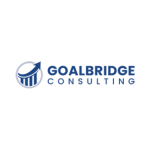Meetings are an essential part of business, fostering collaboration, decision-making, and idea exchange. Yet, they can often be inefficient or overwhelming if not carefully planned. Meeting planning is both an art and a science, balancing structure with flexibility, goals with open discussions, and the practical with the creative. In this guide, we’ll explore strategies to simplify meeting planning while ensuring successful outcomes.
1. Define Clear Objectives
The first and most important step in meeting planning is to define the purpose. Why is the meeting happening, and what are the desired outcomes? Without clear objectives, meetings can easily go off track, leading to wasted time and frustration.
- Ask the right questions: What is the main goal of the meeting? Is it to make decisions, brainstorm ideas, align on strategy, or solve a problem? Clarifying these objectives will help shape the agenda.
- Create measurable outcomes: Tie your objectives to actionable items. For example, if the goal is to decide on a new project, the desired outcome could be “Select the top two vendors for the project by the end of the meeting.”
A meeting with no purpose will lead to poor results, so spend time defining what you need to accomplish.
2. Plan the Agenda in Advance
An agenda is the backbone of any productive meeting. It keeps everyone on track, provides structure, and ensures that all key topics are addressed.
- Outline key discussion points: The agenda should include every major topic that needs to be covered. It should list who is responsible for each item and how much time should be spent on it.
- Set realistic time limits: Be mindful of how long each agenda item will take. Allocate time for presentations, discussions, and decisions, but keep it tight enough to avoid dragging the meeting out unnecessarily.
- Distribute the agenda beforehand: Send the agenda to all participants well in advance of the meeting. This allows everyone to prepare and ensures that the meeting starts off on the right foot.
Read Now: Planning a meeting? 12 Steps to Successfully Plan A Meeting
3. Invite the Right People
An important aspect of meeting planning is ensuring that only the necessary people attend. Inviting too many people can make the meeting chaotic and unproductive, while inviting too few might leave out key decision-makers.
- Identify key stakeholders: Only include individuals whose input or decisions are critical to the meeting’s goals.
- Limit the number of attendees: Smaller meetings are often more focused and productive. As a rule of thumb, invite no more people than can be adequately managed during the discussion.
- Assign roles: Make sure every participant knows their role. For instance, some people may be responsible for presenting data, while others may be there to approve a plan or provide expertise.
4. Prepare and Distribute Materials
To save time and increase productivity, make sure all relevant information and materials are distributed before the meeting. This ensures that everyone is on the same page and prepared for the discussions.
- Send documents ahead of time: Any data, reports, or reading materials that will be referenced should be shared at least 24 hours before the meeting.
- Encourage preparation: Remind attendees to review the materials in advance. This eliminates the need for time-consuming overviews during the meeting, allowing for more focused discussions.
- Use digital collaboration tools: Platforms like Google Drive or Dropbox make it easy for everyone to access and share important documents, ensuring smooth communication.
5. Start and End on Time
Respecting everyone’s time is crucial to running a successful meeting. Starting and ending on time not only shows professionalism but also ensures that meetings are efficient and focused.
- Set clear time boundaries: Begin promptly at the scheduled time, even if not everyone has arrived. This encourages punctuality and signals that the meeting will be run efficiently. End the meeting on or before the planned time, ensuring that the agenda has been fully addressed.
- Stick to the agenda: It’s easy to get sidetracked during discussions, but keeping the conversation focused on the agenda will help you stay on time.
- Be mindful of time limits: If a discussion runs long, gently remind the group of the time. Consider scheduling a follow-up meeting if necessary.
6. Encourage Participation and Collaboration
Meetings work best when everyone is engaged. Encouraging participation not only helps generate better ideas but also ensures buy-in from the team.
- Invite open discussion: Allow time for questions and contributions from all attendees. This creates a more dynamic environment and may bring up valuable perspectives.
- Manage dominant voices: In some meetings, a few people may dominate the conversation. As the organizer, make sure to actively involve quieter participants. This can be done by directly asking for their input or creating opportunities for them to contribute.
- Use icebreakers for large meetings: For larger or virtual meetings, brief icebreakers can help attendees feel more comfortable and open to sharing ideas.
7. Assign Actionable Follow-ups
One of the biggest challenges with meetings is translating discussions into actions. To ensure your meeting leads to results, make sure to assign clear follow-up tasks.
- Assign responsibilities: After discussing each agenda item, ensure that someone is responsible for any follow-up actions. Assign tasks clearly, including deadlines.
- Summarize decisions and next steps: At the end of the meeting, recap what was decided and what the next steps will be. Ensure everyone understands their role in moving the project or initiative forward.
- Follow up after the meeting: Send a brief meeting summary or minutes to participants, outlining key decisions, action items, and deadlines.
8. Leverage Technology
Using the right technology can make meeting planning easier and ensure the meeting runs smoothly.
- Video conferencing tools: For remote meetings, platforms like Zoom or Microsoft Teams provide a robust solution for video calls, screen sharing, and recording discussions.
- Project management tools: Tools like Trello or Asana can be used to manage follow-up tasks and action items, keeping everyone accountable after the meeting.
- Polling and voting software: In decision-heavy meetings, consider using polling software to quickly gather opinions or votes on key topics.
Conclusion
Effective meeting planning doesn’t have to be complicated. By setting clear objectives, creating a structured agenda, inviting the right people, and assigning follow-ups, you can run efficient and successful meetings that drive results. Using these strategies, you’ll not only simplify the planning process but also make the meeting experience more productive for everyone involved.
Hire A expert Business Consultant






Comments